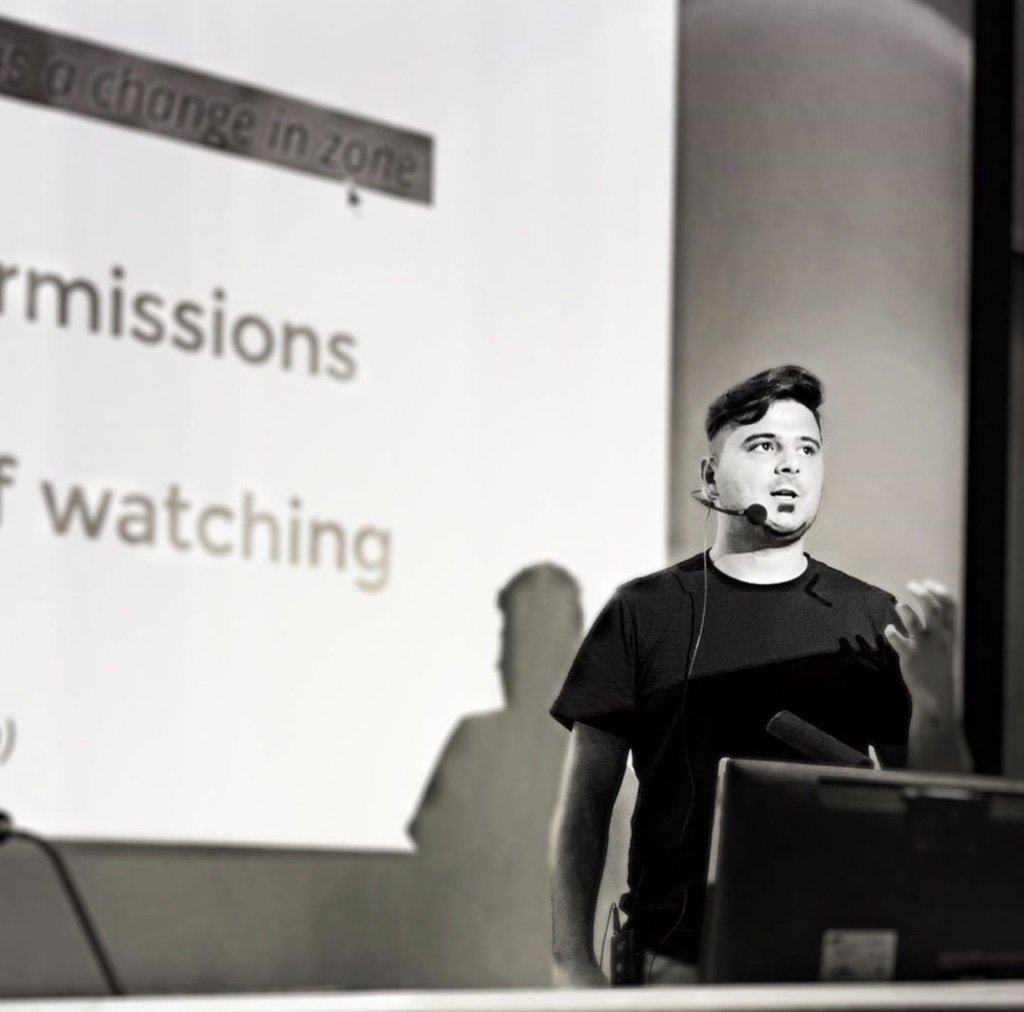Introduction to modeling with Finite state machines
@farzad_yz


Farzad Yousef Zadeh
@farzad_yz
Senior software engineer @Futurice
International conference speaker.
Web and Mobile development.
Javascript, Typescript.
✈ 🚀 🔭 🌌
💻
What is a State Machine?

W T F?
What is a State Machine?
Mathematical model
Single explicitness source
Useful for modeling states
Finite amount of states
Starts from one of them
Transitions between them only by events
Executes side effects on transitions

state
state
event
event
event
event
Why is it relevant to Software Development then?
Client side applications are Stateful
Toggles
Tabs
Dropdowns
Modals
Pagination
Remote Data
Subscriptions
Observables
Asynchrony
Concurrency
I'm sorry that I long ago coined the term "objects" for this topic because it gets many people to focus on the lesser idea.
The big idea is MESSAGING
Client side applications are Event Driven
Push based
Pull based
Reactive
Data binding
(unidirectional, bidirectional)
Event >> Actions
element.addEventListener("click", clickHandler);
channel.on("message", readMessage);Finite State Machine in Practice
Think in States
State ≠ State
type State = {
isLoading: boolean;
accounts: Account[];
error?: any;
};type State =
| "Idle"
| "Loading"
| "Success"
| "Error";We're acustomed to
in the FSM world
Where to apply?
const remoteDataState =
| "Idle"
| "Pending"
| "Success"
| "Error"const remoteDataState = {
isPending: boolean;
}Before
After
Promises/Futures
const formState =
| Idle
| Touched
| Validating
| Submittingconst formState = {
isTouched: boolean;
isValidating: boolean;
isSubmitting: boolean;
}Before
After
Mutual Exclusivity
FSM tight couples States and Events
const formState = {
initialState: "idle",
states: {
idle: {
on: {
INPUT_FOCUS: "touched"
}
},
touched: {
on: {
INPUT_CHANGE: "validating"
}
}
}
}{
initial: "idle",
states: {
idle: {
on: {
TYPE: "readyToSearch"
}
},
readyToSearch: {
on: {
SUBMIT: "searching"
}
},
submitting: {
on: {
SEARCH_SUCCESS: "itemsRendered",
SEARCH_FAILURE: "errorShown"
}
}
}
}Concurrency Issues
Search
Search
Pizza and Beer
Additional Benefits of FSM
Visualized Logic

Onboarding new developers
Understanding legacy code
Faster feature iterations
Robust debugging
Cross Competence communication
Cross platform logic sharing
function HeadlessCarousel(props) {
const {children, ...carouselProps} = props;
const [state, sendEvent] = useMachine(carouselProps);
return children({
state: state.value,
data: state.context,
next() {
sendEvent("NEXT")
},
prev() {
sendEvent("PREV")
},
play() {
sendEvent("PLAY");
},
pause() {
sendEvent("PAUSE")
}
})
}<HeadlessCarousel>
{headlessCarousel => {
<div>
<button onClick={headlessCarousel.next}>
Next
</button>
</div>
}}
</HeadlessCarousel><HeadlessCarousel>
{headlessCarousel => {
<View>
<TouchableOpacity onPress={headlessCarousel.next}>
Next
</TouchableOpacity>
</View>
}}
</HeadlessCarousel>stdin.on("keypress", (_, code) => {
if (code === ARROW_RIGHT) {
sendEvent("NEXT");
}
});Web
Mobile
Command Line 😱
Limitations of FSM
State Explosion
Conditional transitions
Conditional side effects
State Structure
StateCharts
extends FSM
What is StateChart then?
Make Nested machines
Make Parallel Machines
Conditional Transitions
Store Non-concrete state
&& data
Things can happen only if other things have happened before
Things can live independently in the same context
Guard against invalidity / Branching logic
Model non-concrete concepts e.g. Animations / Internal data store
Submit form only after the input is validated
Twitter Feed vs Side Widget
Red input when invalid / Green input when valid
Battery percentage / List of countries / Server Error
State Structure
What is StateChart then?
Support Entry Actions
Support Exit Actions
Actions to be executed when you enter a state (Good for initializing stuff)
Actions to be executed when you exit a state (Good for cleaning up)
Start off a fetch controller upon entering the pending state
Cancel the fetch upon exiting pending state
Different type of
Side Effects
Fire and Forget, invoking async tasks, activities, streams, etc
Takeaways
Any state is worth a State Machine
State Machines bring up implicit / hidden / missing states to the surface
State Machines follow a (state, event) >> action
State Machines are easier to reason about
State Machines consider the dimension of time

Farzad Yousef Zadeh
@farzad_yz
#GDG #Elisa